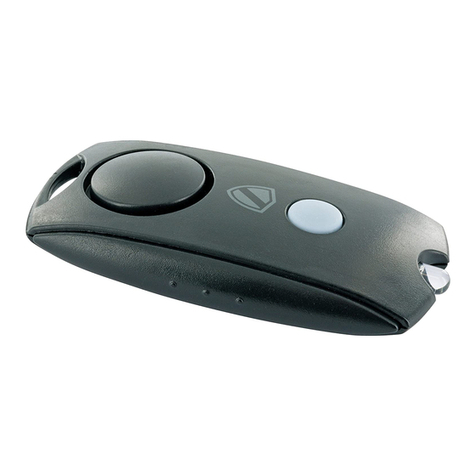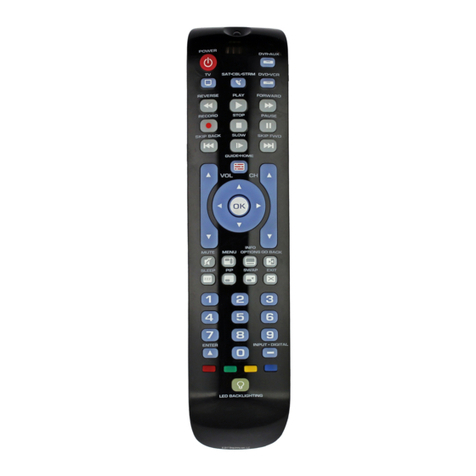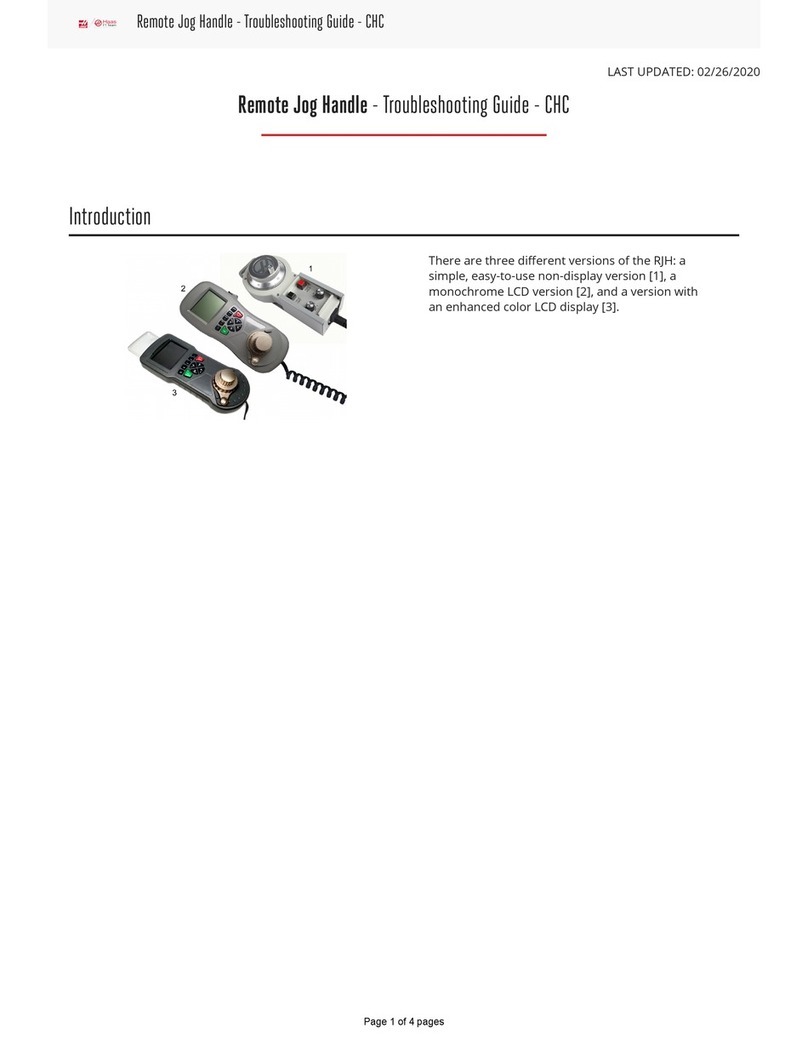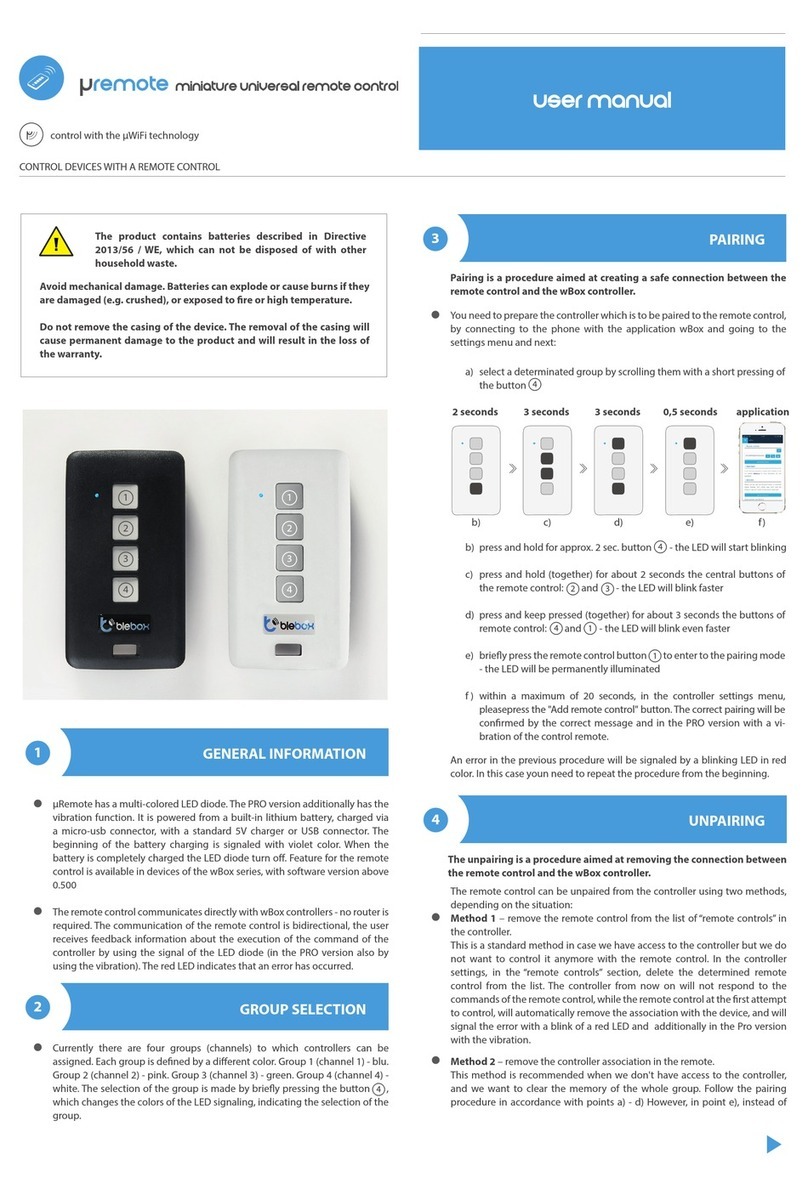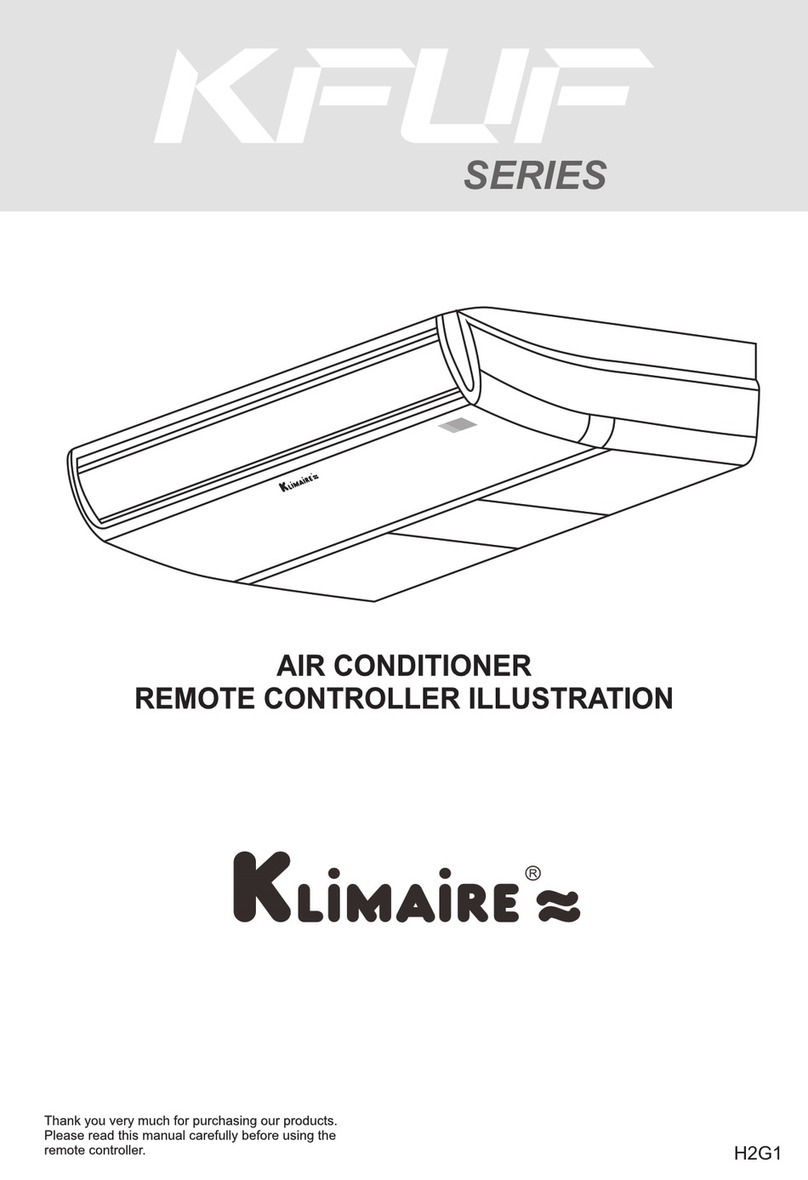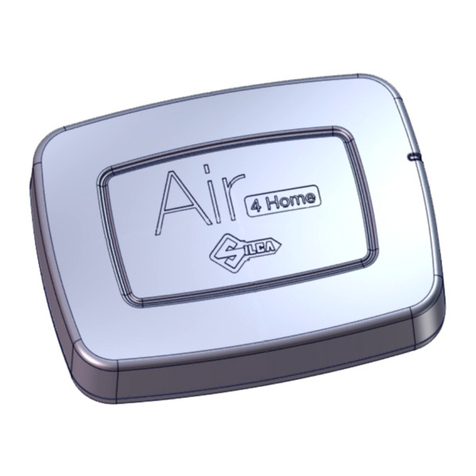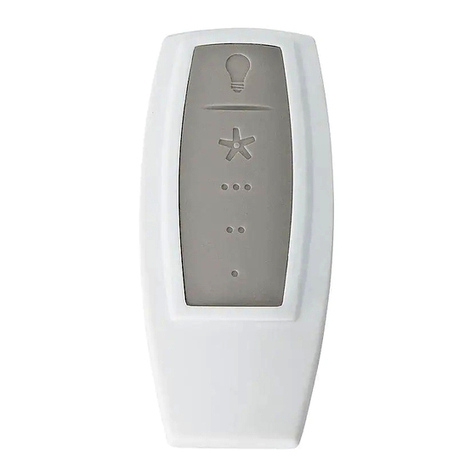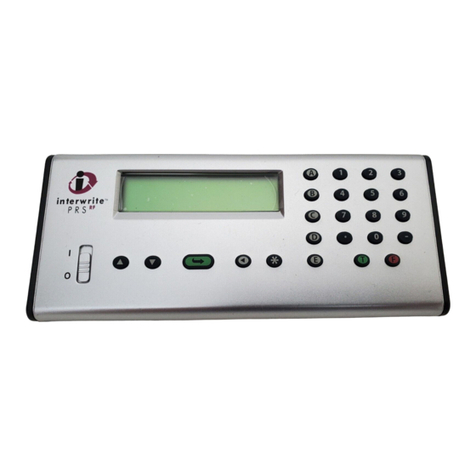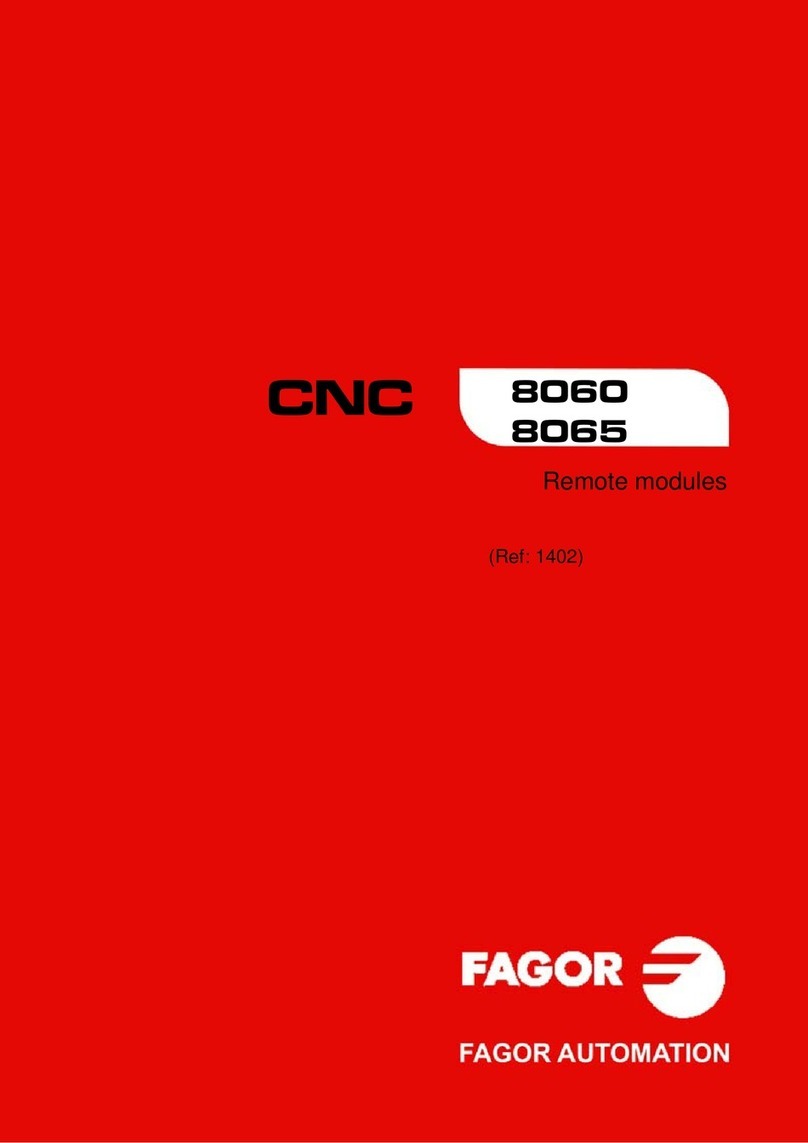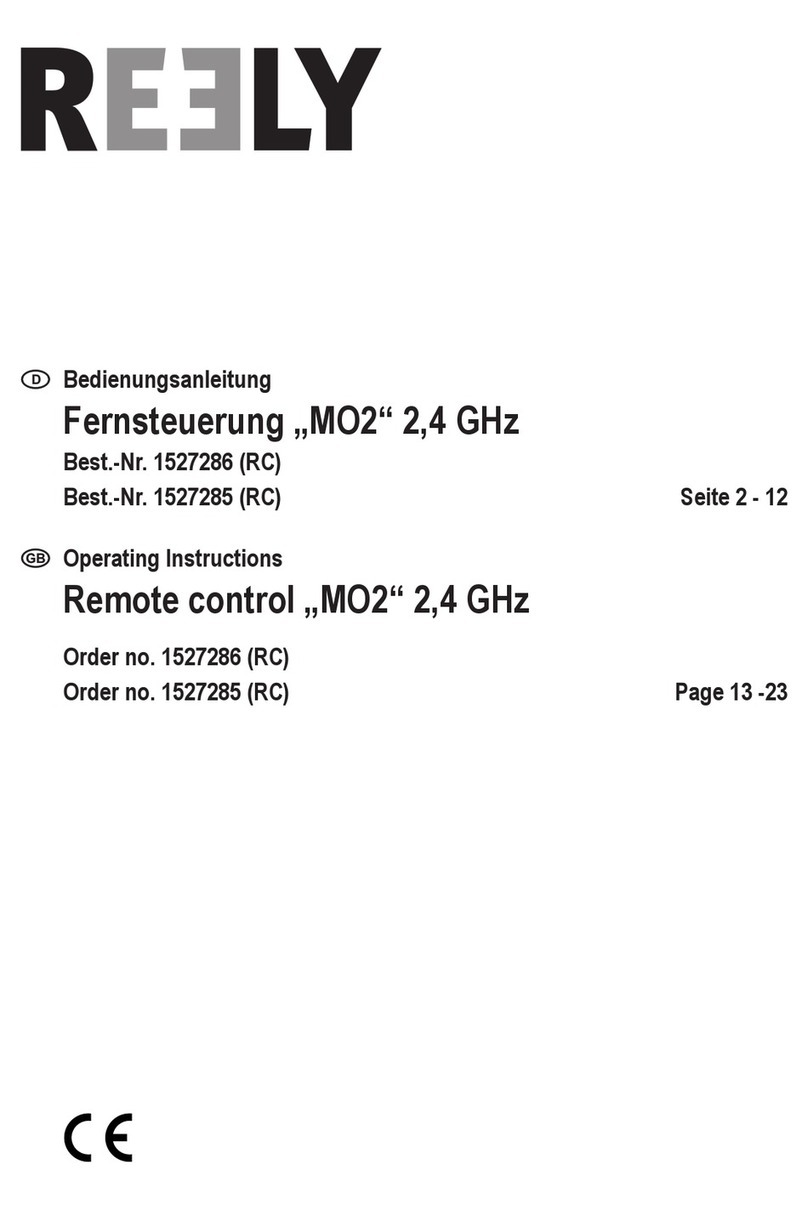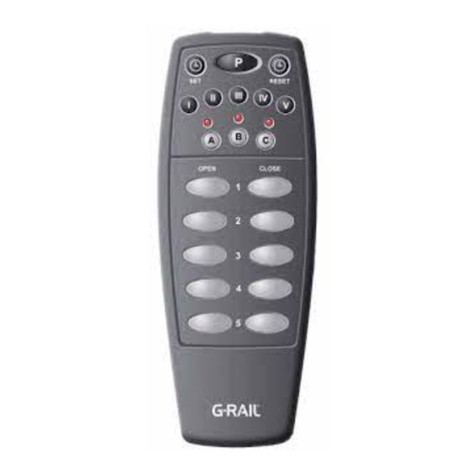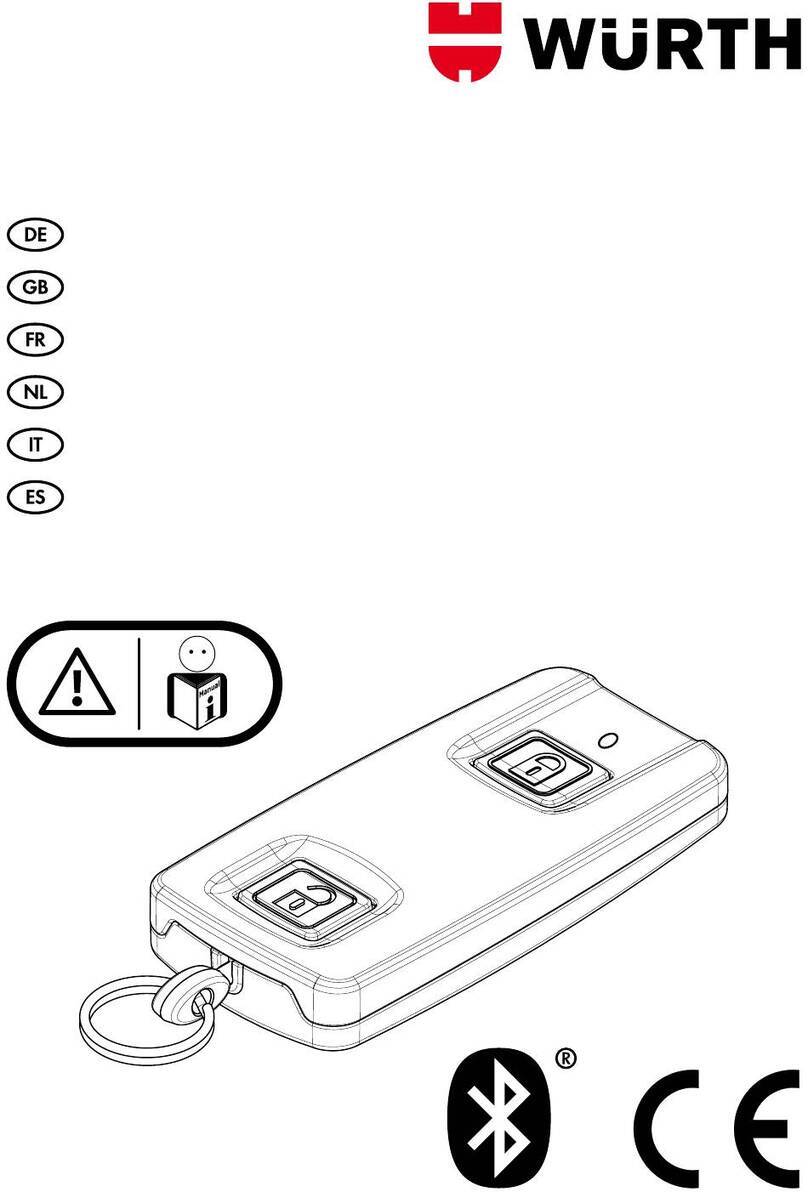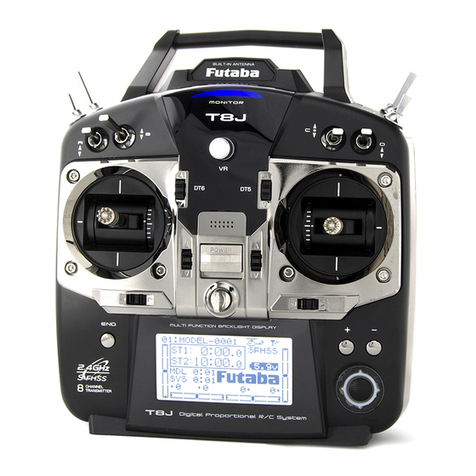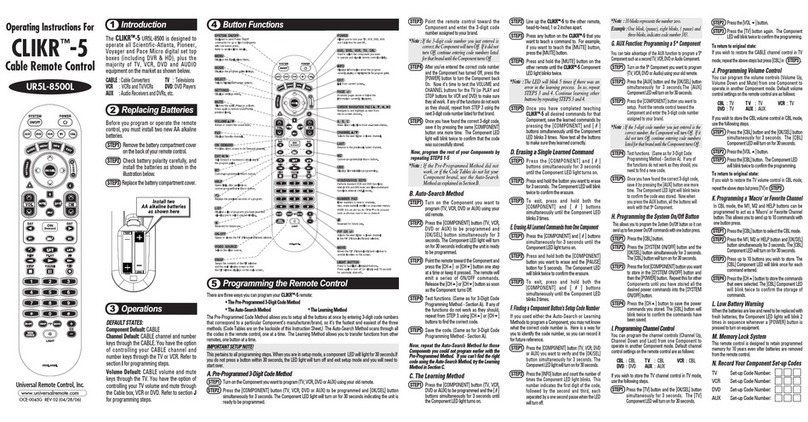Trainer NF1200-T User manual

i-PAD NF1200-T
Operator’s Manual
AED Trainer

2CU Medical Systems, Inc.
NF1200-T
Table of Contents ·············································································································· 2
1. Introduction ·················································································································· 3
Product Description ·············································································································· 3
Intended Use···················································································································· 3
2. Device Orientation········································································································· 4
3. Setting up the i-PAD ······································································································ 8
Package Contents ············································································································· 8
Infrared Remote Controller (Remocon) ················································································ 9
Rescue Scenarios ············································································································ 11
Setting up the i-PAD NF1200-T ························································································· 14
4. Using the i-PAD NF1200-T ··························································································· 15
Simulated Rescue Preparation··························································································· 15
Simulated Main Rescue Sequence ····················································································· 18
5. Servicing the i-PAD NF1200-T ····················································································· 23
Warranty ······················································································································· 23
Warranty Disclaimer ········································································································ 23
Service ·························································································································· 24
How to Contact Us ·········································································································· 25
Table of Contents

3
Operator’s Manual Ver 1.30
The charging and shock delivery operations of the i-PAD NF1200-T are simulated
only. The device does not contain any defibrillating capacitor and thus it can not
deliver a real defibrillating shock.
NOTICE
1. Introduction
Product Description
The i-PAD NF1200-T is a defibrillator simulator designed to mimic the operations of the i-PAD
NF1200. It can simulate functions of the i-PAD NF1200 such as charging and shock delivery.
It has preprogrammed rescue scenarios that are in accordance with the recommended rescue
protocol of international rescue policy making bodies such as the American Heart Association, the
European Resuscitation Council, and the American Red Cross.
It is to be used in conjunction with the resuscitation mannequin from CU Medical Systems, Inc.
It has a standard infrared remote control accessory which renders it operable by an instructor from
a distance.
Intended Use
The i-PAD NF1200-T is intended for use during Advanced Cardiac Life Support training, Basic Life
Support training, or any other physician approved trainings that deal with the operation of an
automated external defibrillator.
The i-PAD NF1200-T is not intended for use during actual rescue operations as it can not deliver a
defibrillating shock.

2. Device Orientation
NF1200-T
4CU Medical Systems, Inc.
State LED
Power
ON/OFF
button
Remote
control
sensor
i-ButtonHandle
Cover
Turn
ON
First
1
ON/OFF
Then Open
1
Turn
ON
2
Top View of the i-PAD NF1200-T with its cover closed
•

Power ON/OFF
Button Press this button to turn the i-PAD NF1200-T ON or OFF.
i-Button
This button may be used to change the compression-ventilation ratio.
When no pads are attached, entering administration mode by pressing
this button is disabled in this version of the i-PAD NF1200-T.
State LED
Indicates the status of the i-PAD NF1200-T
• blinking green: the i-PAD NF1200-T is in standby mode and ready
for a rescue operation
• solid green: the i-PAD NF1200-T is in rescue mode.
• blinking red: the i-PAD NF1200-T detected a system error or low
battery level during a self-test.
• solid blue: the i-PAD NF1200-T is conducting a self-test.
Operator’s Manual Ver 1.30
5
Shock Button
IrDA (Communication) Port
Battery Pack
Cover
AED Electrode Pads
Connector Port
Quick Reference
Guide
Graphical Rescue
Guide
Perspective view of the i-PAD NF1200-T with its cover open
•

Handle An easy-grip carrying handle for increased portability of the i-PAD
NF1200-T.
Cover Covers the front panel of the i-PAD NF1200-T and retains the
defibrillator electrode pads package.
SHOCK button
Press this button when the i-PAD NF1200-T prompts you to “Press
the flashing orange button now”.
Pressing this button delivers a simulated defibrillation shock to the
manikin.
AED electrode pads
connector port Plug the connector of the AED electrode pads into this port
Graphical Rescue
Guide
Guides you by indicating the current step in the simulated rescue
process.
Quick Reference
Guide
A printed card that summarizes the steps of a simulated rescue
process using the i-PAD NF1200-T.
Battery Pack Provides power to the i-PAD NF1200-T.
IrDA
Communication
Port
This port is disabled in this version of the i-PAD NF1200-T.
Remote Control
Sensor
Senses the infrared control signal from the remote controller. Point
the remote controller at this sensor when you want to control the
i-PAD NF1200-T.
NF1200-T
6CU Medical Systems, Inc.

Operator’s Manual Ver 1.30
7
Do not store the device in
areas with highly fluctuating
temperatures.
Do not store the device
in areas that are directly
exposed to sunlight.
Do not operate or store the
device in conditions that are
beyond the following specified
limits.
Standby conditions
Temperature: 0 °C to 43 °C (32 °F to 109 °F)
Humidity: 5 % to 95 % (non - condensing)
Operating Conditions
Temperature: 0 °C to 40 °C (32 °F to 104 °F)
Humidity: 5 % to 95 % (non - condensing)
Storage Conditions
Temperature: -20 °C to 60 °C (-4 °F to 140 °F)
Humidity: 5 % to 95 % (non - condensing)
Do not store the device
near heating equipment.
Do not install or store in
environments where humidity
tends to rapidly increase or
there is a ventilation problem.
Do not store the device in
areas where there is high
vibration
(in excess of Category 10
of MIL-STD-810E).
Do not operate or store
the device in environments
with high concentration of
flammable gas or anesthetics.
Do not operate or store
the device in areas with
high concentration of dust.
Only personnel authorized by
the manufacturer may open
the device for servicing.
There are no user serviceable
components inside the device.
For product installation and storage, be sure to refer to the following instructions and avoid damage
to the product.

3. Setting up the i-PAD NF1200-T
Package Contents
The i-PAD packaging box contains the following items.
NF1200-T
8CU Medical Systems, Inc.
Tu rn
ON
First
1
ON/OFF
Then Open
1
Tu rn
ON
2
i-PAD NF1200-T
Disposable, non-rechargeable
battery pack
Rechargeable battery pack (option)
Battery Charger (option) Infrared Remote Controller
Trainer Pads
Operator’s Manual

Infrared Remote Controller (Remocon)
This enables an instructor to control the i-PAD NF1200-T from a maximum distance of 3 meters. The
Remote Controller should be pointed at the remote controller sensor of the i-PAD NF1200-T when
controlling its operation.
The instructor should control the i-PAD NF1200-T using this Remote Controller only. Any changes in
simulated ECG and training scenario should be done using this Remote Controller.
Infrared Remote Controller
Operator’s Manual Ver 1.30
9

Infrared Remote Controller Functions
Key Function
POWER OFF Turns the power of the i-PAD NF1200-T OFF when pressed while the
i-PAD NF1200-T is ON.
PAD ON/OFF
Simulates pads ON and pads OFF conditions. Toggles between the
said two conditions when pressed (i.e. if the pads are ON, turns OFF
the pads when pressed; if the pads are OFF, turns ON the pads when
pressed).
After the trainee attaches the pads to the manikin, pressing this button
simulates the attachment of the pads and starts rescue scenario 1.
LOW BAT Simulates a low battery condition when pressed.
UP Increases the level of audio volume when pressed.
DOWN Decreases the level of audio volume when pressed.
S1 to S8
Rescue scenarios 1 to 8. The rescue scenarios simulate rescue
conditions in the field. The trainee may react to the scenarios by doing
the appropriate actions. Only scenarios 1 to 8 are implemented on this
version of the i-PAD NF1200-T
NF1200-T
10 CU Medical Systems, Inc.

Rescue Scenarios
Operator’s Manual Ver 1.30
11
Scenario Number Scenario
S1
a. Shockable rhythm
b. Shock delivery
c. CPR administration (30 chest compressions, 2 artificial breaths)
d. Normal Sinus Rhythm
e. CPR administration (30 chest compressions, 2 artificial breaths)
S2
a. Normal Sinus Rhythm
b. CPR administration (30 chest compressions, 2 artificial breaths)
c. steps a and b looped continuously
S3
a. Shockable rhythm
b. First Shock delivery
c. CPR administration (30 chest compressions, 2 artificial breaths)
d. Shockable rhythm
e. Second Shock delivery
f. Normal Sinus Rhythm
g. CPR administration (30 chest compressions, 2 artificial breaths)
S4
a. Shockable rhythm
b. First shock delivery
c. CPR administration (30 chest compressions, 2 artificial breaths)
d. Normal Sinus Rhythm
e. CPR administration (30 chest compressions, 2 artificial breaths)
f. Rhythm changes to shockable rhythm.
g. Second shock delivery
h. CPR administration (30 chest compressions, 2 artificial breaths)
i. Normal Sinus Rhythm
j. CPR administration (30 chest compressions, 2 artificial breaths)

Rescue Scenarios, continued
NF1200-T
12 CU Medical Systems, Inc.
Scenario Number Scenario
S5
a. Shockable rhythm
b. Shock delivery
c. CPR administration (30 chest compressions, 2 artificial breaths)
d. Steps a to c looped continuously
S6
a. Shockable rhythm
b. First Shock delivery
c. CPR administration (30 chest compressions, 2 artificial breaths)
d. Shockable rhythm
e. Second shock delivery
f. CPR administration (30 chest compressions, 2 artificial breaths)
g. Normal Sinus Rhythm
h. CPR administration (30 chest compressions, 2 artificial breaths)
i. Rhythm changes to shockable rhythm
j. Third shock delivery
k. CPR administration (30 chest compressions, 2 artificial breaths)
l. Normal Sinus Rhythm
m. CPR administration (30 chest compressions, 2 artificial breaths)

Rescue Scenarios, continued
Operator’s Manual Ver 1.30
13
Scenario Number Scenario
S7
a. Shockable rhythm
b. First Shock delivery
c. CPR administration (30 chest compressions, 2 artificial breaths)
d. Shockable rhythm
e. Second shock delivery
f. CPR administration (30 chest compressions, 2 artificial breaths)
g. Shockable rhythm
h. Third shock delivery
i. CPR administration (30 chest compressions, 2 artificial breaths)
j. Normal Sinus Rhythm
k. CPR administration (30 chest compressions, 2 artificial breaths)
S8
a. Normal Sinus Rhythm
b. CPR administration (30 chest compressions, 2 artificial breaths)
c. Shockable Rhythm
d. Shock delivery
e. CPR administration (30 chest compressions, 2 artificial breaths)
f. Normal Sinus Rhythm
g. CPR administration (30 chest compressions, 2 artificial breaths)
ThenOpen
ON/OFF
1
2
Turn
ON
1
First
Turn
ON

Setting up the i-PAD NF1200-T
①Upon opening the packaging box, verify that it contains all the items listed in the packing list.
② Familiarize yourself with the controls and features of the i-PAD NF1200-T. Study the functions of
the buttons, switches, indicators, and connection ports.
③Place the trainer defibrillator pads package as shown in the following figures.
④ Install the battery pack.
⑤ Place the i-PAD NF1200-T inside the carrying case if you have purchased this optional accessory.
NF1200-T
14 CU Medical Systems, Inc.
Then Open
1
2
Turn
ON
ThenOpen
ON/OFF
1
2
Turn
ON
1
First
Turn
ON

4. Using the i-PAD NF1200-T
Simulated Rescue Preparation
1. Open the cover of the i-PAD NF1200-T
2. Press the ON/OFF button to turn the i-PAD NF1200-T ON
The i-PAD NF1200-T activates the following Indicators and Voice Prompt, in sequence:
• State LED: turns solid blue
• Beeper: emits a short continuous beep
• State LED: turns solid green
• Voice prompt: “Attach pads”
The voice prompt is played until the training instructor presses the PAD ON/OFF or any scenario
key (S1 to S8) button to simulate a rescue scenario. The training instructor must press the PAD
ON/OFF button only after the pads are attached to the manikin by the trainee.
Operator’s Manual Ver 1.30
15
Then Open
1
2
Turn
ON

3. Remove the clothing of the patient simulator (manikin)
4. Tear open the packaging of the pads
5. Take the pads out of its packaging
NF1200-T
16 CU Medical Systems, Inc.
CAUTION
To the training instructor: Emphasize the following caution to the trainee.
Do not waste time in removing the patient simulator’s clothing. If necessary, rip off or
cut off the patient simulator’s clothing.

PediatricAdult
6. Plug the connector of the pads into the AED electrode pads connector port of
the i-PAD NF1200-T
7. Look at the graphics on the back of the pads. The graphics indicate the
positions of the pads on the patient’s body.
8. Peel off the protective sheets of the pads.
Operator’s Manual Ver 1.30
17

Simulated Main Rescue Sequence
STEP 1: Attach the pads
To the training instructor: As soon as the pads are attached, press the PAD ON/OFF button or run the
desired scenario by pressing the appropriate scenario key on the remote controller. Pressing the PAD
ON/OFF button runs scenario 1 by default.
STEP 2: Press the SHOCK button if instructed
The i-PAD NF1200-T begins rhythm analysis simulation as soon as the training instructor presses the
PAD ON/OFF button or any scenario button from S1 to S8.
The i-PAD NF1200-T activates the following Indicator and Voice prompt during simulated rhythm
analysis:
• Voice prompt: “Analyzing heart rhythm”
• Graphical Rescue Guide: lights up the second step of the rescue operation.
After simulated rhythm analysis, the i-PAD NF1200-T proceeds according to the rhythm predetermined
by the chosen rescue scenario.
NF1200-T
18 CU Medical Systems, Inc.

Operator’s Manual Ver 1.30
19
WARNING
To the training instructor: Emphasize the following warning to the trainee.
Do not let anybody touch the patient when you press the SHOCK button. Defibrillation shock can
cause operator or bystander injury.
If a shock is needed:
Indicators and Voice prompts:
• Beeper: 1 second continuous beep
• Voice prompt: “Shock advised”
• Beeper: beeps continuously until the SHOCK button is pressed or until the i-PAD NF1200-T
disarms itself if the SHOCK button is not pressed within 15 seconds.
• Voice prompt: “Press the flashing orange button, now. Deliver shock, now”
• SHOCK button backlight: flashing orange.
You must press the SHOCK button to deliver the simulated shock.
• If you press the SHOCK button, the i-PAD NF1200-T delivers a simulated defibrillating shock. It
informs you of the shock delivery with the voice prompt: “Shock delivered”
• If you do not press the SHOCK button within 15 seconds, the i-PAD NF1200-T disarms itself and
proceeds to CPR Guidance.
If a shock is not needed:
Indicator:
• Voice prompt: “No shock advised”

STEP 3: Perform CPR
The i-PAD NF1200-T directs you to do CPR after delivering one shock or if the ECG rhythm is not
shockable, after rhythm analysis.
Indicators and Voice Prompts
• Graphical Rescue Guide: lights up the third step of the rescue operation.
• For other indicators and voice prompts, see CPR Protocol
In the real i-PAD NF1200 device, the CPR protocol depends on the following settings:
1. Rescue Provider
• Lay Rescuer
• Healthcare Provider
2. Compression-Ventilation Ratio
• 30:2 (30 compressions, 2 breaths)
• 15:2 (15 compressions, 2 breaths)
In the i-PAD NF1200-T, the rescue provider setting may not be changed. The rescue provider is set to
Healthcare Provider setting period.
The compression-ventilation ratio setting may be changed by pressing the i-Button during CPR
administration.
NF1200-T
20 CU Medical Systems, Inc.
Table of contents

